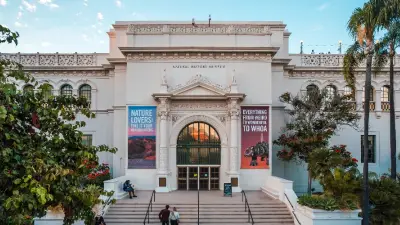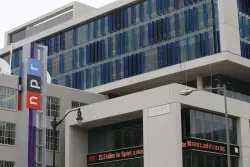Opinion: Business support for the arts isn’t just philanthropy — it’s an investment in our future

The San Diego Natural History Museum in Balboa Park Photo courtesy of the museum When the San Diego Natural History Museum in recent days received a transformative million gift from Dr Irwin Jacobs the area celebrated not only the establishment of the Joan and Irwin Jacobs Center for Science and Conservation but also something deeper a model for the kind of future-focused venture that reshapes cities This landmark gift is an outlay in our science and in the future of our region commented Judy Gradwohl the museum s president and CEO She s right This isn t completely generosity it s vision What makes this donation extraordinary isn t just its size but the values it represents Irwin Jacobs co-founder of Qualcomm and one of San Diego s majority influential civic figures has consistently demonstrated that giving back is not about charity it s about building group He and his wife Joan have redefined what it means to be philanthropists showing that strategic promotion of custom science and the arts can serve as the foundation for an innovative thriving region Giving to the arts is smart business In in the modern day s corporate world businesses are no longer judged solely by profit margins or domain share Increasingly companies are evaluated by their ethics area involvement and social responsibility Supporting the arts isn t merely a feel-good move it s a smart strategic one Countless business leaders agree that the arts are a nice addition to any district but chosen still see them as expendable Irwin Jacobs clearly does not And he s not alone various corporate visionaries understand that authentic cultural engagement creates real value It strengthens brand identity builds employee pride deepens group loyalty and opens doors to innovation In short it s a competitive advantage Unfortunately not every company sees it this way For various supporting the arts is just something to do during profitable years an optional line item What remains uncertain is whether the business sector at large truly recognizes arts and cultural integration as a fundamental path to fostering creativity and long-term economic strength Creativity isn t a luxury it s a necessity Business leaders are not oblivious they understand the importance of innovation But in the face of quarterly earnings reports and relentless pressure for short-term returns it can be hard to prioritize investments with long-range payoffs Arts training public arts programs and creative integration in schools are often sidelined solely because their impact isn t promptly measurable But we must connect the dots If we want a future-ready workforce equipped with the new thinking skills essential for the st-century commercial sector skills like adaptability problem-solving collaboration and creativity then we must begin now The arts are not just extracurricular sessions They are core components of advancing a population that can think beyond the obvious design bold solutions and adapt to a rapidly changing global region Educators and artists alike must reframe the narrative It s not enough to say that arts are significant We must demonstrate that they are essential to the new commercial sector By integrating the arts into training urban planning and workforce improvement we are not indulging a cultural preference we are investing in the creative financial market Building a creative market system starts with neighborhood Cities must act as incubators for this creative business activity and that means laying the groundwork now It requires financing not just in equipment and infrastructure but in people It requires broadband access innovative schooling models and yes cultural and artistic vitality When philanthropists like the Jacobs s step forward they do more than fund a building or a initiative They invest in a future where citizens are prepared to take ownership of their communities where the arts are used to activate both sides of the brain and where the next generation of thinkers leaders and creators is being trained to meet global challenges head-on Creativity leads to innovation Innovation leads to economic enhancement And economic expansion in in the modern day s world demands cultural engagement imaginative thinking and the kinds of visionary investments that bridge science art and business Supporting the arts isn t philanthropy it s good business It s how we build cities that matter economies that thrive and a future that inspires John Eger is professor emeritus in the School of Journalism and Media Studies at San Diego State University Previously he served as legal assistant to FCC Chairman Dean Burch telecommunications advisor to President Gerald R Ford and Senior Vice President of CBS Worldwide Enterprises

